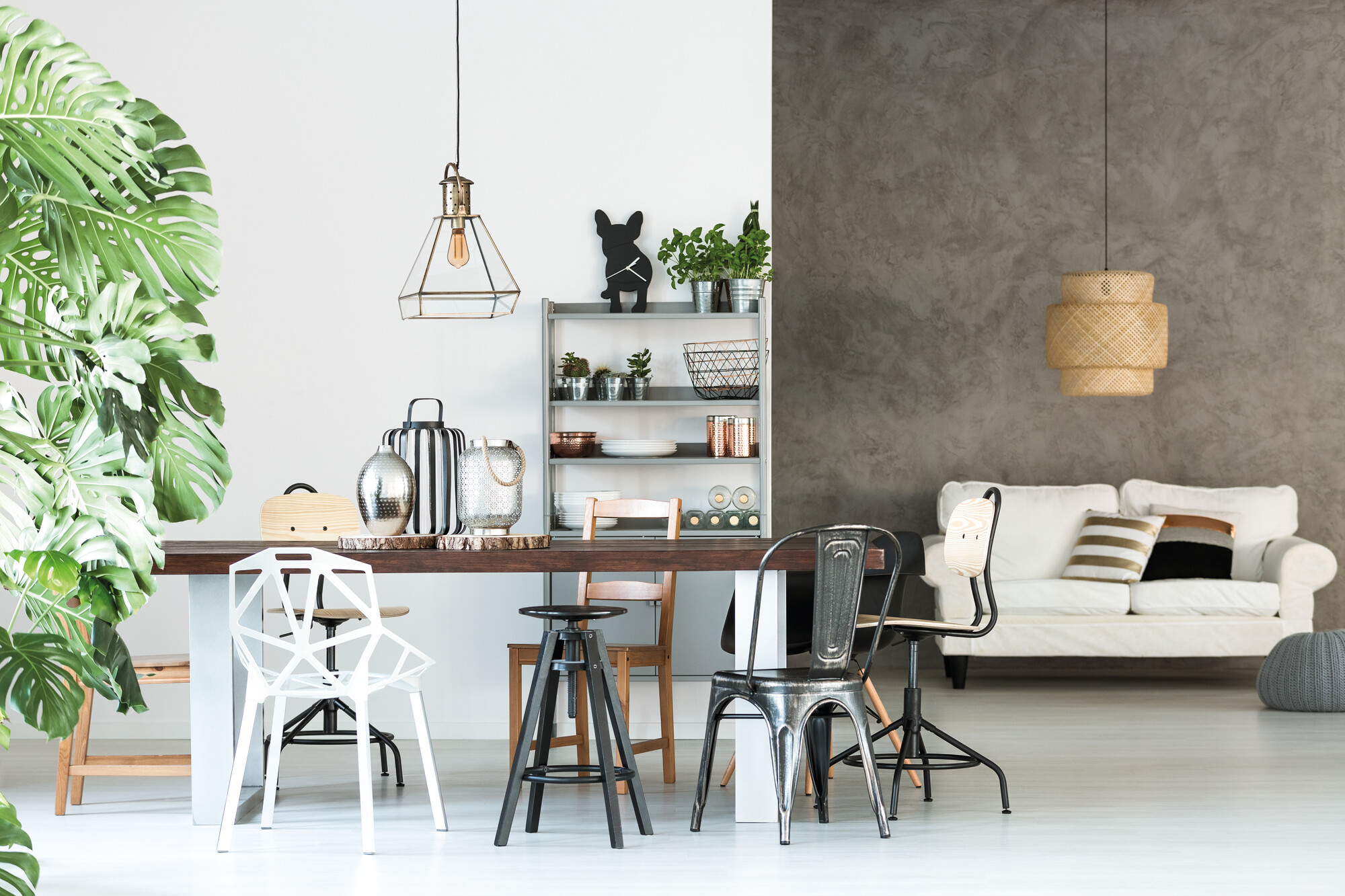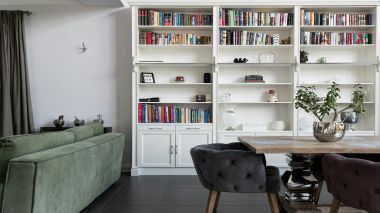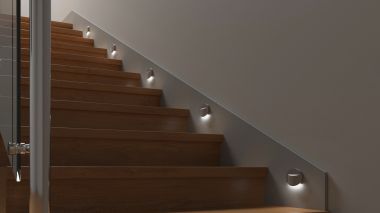Guide: How to choose light bulbs for different spaces?
Appropriate lighting is one of the most important elements of interior design, yet it is often underrated. Meanwhile, lighting actually has the greatest impact on a room's atmosphere, our well-being, and even the efficiency of task execution. How can you reconcile functionality with aesthetics when choosing light bulbs? In this guide, you will learn how to consciously choose lighting to create a space that is not only beautiful but also eye-friendly and task-customized.

The basic parameters of light bulbs worth knowing
Before we start with detailed recommendations for specific rooms, it's worth knowing the most important parameters of light bulbs that define their properties:
● power (W) - In the case of traditional bulbs, higher power meant brighter light. However, in the LED world, power is no longer a clear indicator of brightness. Modern LED diodes consume much less energy while providing comparable brightness. For example, a 5W LED bulb can replace a traditional 60W bulb. It can differ depending on the LED bulbs from different series, which is why it is worth paying attention to light flux.
● light flux (lm) - lumens are the actual indicators of bulb brightness. A higher value provides brighter light. For example:
○ 450-800 lm: equivalent of traditional bulb 40-60W
○ 1100-1600 lm: equivalent of traditional bulb 75-100W
● colour temperatures (K) - this parameter defines the 'warm' or 'cold' light emitted. It is Measured in kelvins (K), and colour temperature creates the atmosphere of a room:
○ 2700-3000K: warm, yellow light, perfect for relaxation
○ 3500-4000K: neutral, white light, good for everyday activities
○ 5000-6500K: cold, blue light, increase concentration
● colour rendering index (CRI) - determines how accurately the light source reproduces the colours of the objects it illuminates. A CRI higher than 80 provides good colour reproduction, and higher than 90 provides very good reproduction – which matters in places where accurate recognition is important, such as in the kitchen or bathroom.
● energy efficiency - LED light bulbs consume up to 80% less energy than traditional incandescent bulbs while maintaining the same brightness, and their lifespan is 15-25 years with standard use.
With this information, we can laser in on the application of appropriate bulbs in specific rooms.
Living room - relaxation and meeting zone
The living room is a multifunctional space – used for relaxation, meetings, or watching TV. The lighting in this room should be flexible and multifaceted.
● Recommended colour temperature: 2700-3000K, warm light promotes relaxation and creates a cozy atmosphere, while 4000K neutral light, used during common activities and meetings with friends, prevents us from feeling lethargic.
● Lighting solutions:
○ main lighting: a central chandelier or a couple of ceiling lamps provide basic illumination for the whole room (neutral light)
○ additional lighting: floor and table lamps allow you to create atmospheric "light islands" (warm light)
○ decorative lighting: wall lamps, LED strips, or decorative bulbs emphasizing decorative elements
In living room lighting, it's worth using decorative bulbs that, in addition to their unusual shapes, also provide different light fluxes. Explore our wide range of Kanlux decorative bulbs >>>
Kitchen – a place that requires precision
The kitchen is, above all, a place where precision and safety are of the utmost importance. Appropriate lighting in this area directly impacts the comfort of meal preparation.
● Recommended colour temperature: 4000K, which is neutral light, or 5000K, which is slightly cooler, provide good visibility and accurate colour reproduction of food products.
● Lighting solutions:
○ main lighting: evenly placed on the ceiling, preferably in several light points (neutral light)
○ workplace lighting: placed under the upper shelves, directly above the counters (neutral or cool light)
○ kitchen island lighting: preferably, pendant lamps installed at the appropriate height (neutral light)
● Important aspects:
○ a high level of real colour rendering (CRI> 90) for accurate assessment of product freshness
○ sufficient lighting for the workplace area (minimum 600 lumens)
Kanlux tip: Avoid bulbs that provide light with a noticeable colour shade (e.g., yellow, warm light, or colourful LED strips). In the kitchen, lampshade fittings that are easy to keep clean and resistant to grease and water vapor work well.
Bedroom - an oasis of peace
The bedroom is an area intended primarily for rest and sleep, which is why the lighting should promote relaxation and tranquility. At the same time, it's worth remembering about functionality, as the bedroom is also used as a place to read.
● Recommended colour temperature: 2700K or lower, very warm light promotes melatonin production – the sleep hormone.
● Lighting solutions:
○ soft main lighting: preferably scattered and non-glare
○ night lights: placed next to the bed, preferably with the ability to adjust the light direction
○ wall lamps: work well as a light source for reading, relieving space on bedside tables
A decorative version of the GLOBE type bulb in a smaller size will be perfect for the bedroom. Kanlux XLED G95 SW allows to create a very cozy atmosphere, thanks to the unique warm light color and amber glass in which the spiral LED filament is enclosed. It's an excellent choice for bedside lamps or wall lamps. The soft, warm light creates an intimate atmosphere conducive to tranquility before sleep, and it will also serve as an elegant decorative element.
Kanlux tip: In the bedroom, it's definitely worth investing in a dimming system or an intelligent lighting system that allows you to adjust the light intensity according to the time of day and activity. Avoid bright, cold light 1-2 hours before sleep (also from your phone), as it can interfere with melatonin production.
Bathroom - functionality and aesthetics
The bathroom requires a particular approach to lighting due to the humidity present in it.
● Recommended colour temperature: 3000-4000K, which is neutral to slightly warm light, provides accurate color reproduction of the skin.
● Lighting solutions:
○ main lighting: evenly placed, preferably on the ceiling, provide good visibility
○ mirror lighting: the most important lighting in the bathroom, preferably placed on both sides of the mirror or around it, providing even face illumination without shadows
○ shower/bath lighting: soft, atmospheric lighting enhances bathing comfort
● Important aspects:
○ safety: all fittings should have an appropriate IP rating (minimum IP44)
○ high CRI: for proper make-up application and checking one's skin.
○ even lighting: eliminate unwanted shadows on face
Kanlux tip: In the bathroom, it’s worth using a solution that allows you to choose different color temperatures – cold light to wake you up in the morning, and warm light at night for relaxation.
Home office - concentrate above all
A room designed for work requires lighting that supports concentration and protects against fatigue, especially during long-term computer use.
● Recommended colour temperatures: 4000-6000K, colder light that increases vigilance and concentration.
● Lighting solutions:
○ main lighting: even, not creating sharp shades
○ desk lamp: with possibility of adjusting the direction and intensity of light
○ additional lighting: eliminating the contrast between the screen and its surroundings
● Important aspects:
○ brightness: 500 – 800 lumens for office space
○ dazzle reduction: especially important when working with screens
○ the possibility of customization: a good desk lamp allows you to precisely direct the light
Kanlux tip: In the workplace, it is worth considering lighting with an adjustable colour temperature throughout the day. Systems that imitate natural light changes (brighter and cooler at midday) support the natural daily rhythm and reduce eye fatigue.
Corridor and hall - first impression
Even though we only pass through these spaces, appropriate lighting in a hall or corridor is of great importance—not only functionally but also in creating a strong first impression.
● Recommended colour temperatures: 3000-4000K, neutral to slightly warm creating a friendly, welcoming atmosphere.
● Lighting solutions:
○ main lighting: preferably scattered, evenly illuminating the entire space,
○ additional lighting: emphasizing decorative elements such as paintings, photos, or mirrors,
○ functional lighting: eg. illuminated hangers, wardrobes.
Kanlux tip: In corridors and halls, it is worth using motion or twilight sensors that automatically turn on the light when someone enters the room. This solution is not only convenient but also economical, as the light is on only when needed.
The choice of appropriate lighting for different rooms is more than just a matter of aesthetics—it is an investment in comfort, efficiency, and health. Remember the crucial rules:
1. Match the color temperature to the function of the room—warmer light for relaxation, cooler light for work.
2. Use layered lighting by combining main, task, and decorative lighting.
3. Don't save on quality - choose light sources with a high color rendering index.
4. Consider adjustable brightness and color temperature.
5. Treat lighting as an important element of interior design.
Experimenting with various types of lighting can change the entire character of an interior, without the need for expensive renovation. Thanks to modern LED technology, such as decorative XLED bulbs with visible filaments, you can combine aesthetic value with practicality and energy efficiency.
Other articles
 How to light your home library and reading space?
How to light your home library and reading space?
Reading is one of those activities that truly allows you to pause—to break away from everyday life...
 Lighting for Mezzanine Floors and High Spaces — Challenges and Solutions
Lighting for Mezzanine Floors and High Spaces — Challenges and Solutions
Not every space has the grandeur of a cathedral — and that is quite fortunate. Low interiors, mezzanine...
 Staircase and Corridor Lighting — Safety and Design
Staircase and Corridor Lighting — Safety and Design
Stairs, corridors and other passageways have specific lighting requirements. This is not only for safety...
 Smart lighting management in your home – where to start?
Smart lighting management in your home – where to start?
Smart lighting systems are not only a matter of convenience, but also a conscious step towards better...
 How does LED lighting work?
How does LED lighting work?
The LED lighting in our homes, offices and public areas is here to stay. Today, it is hard to imagine...
 How can lighting create a spa atmosphere in your bathroom?
How can lighting create a spa atmosphere in your bathroom?
When designing a bathroom, not only aesthetics but also lighting matter—when selected appropriately,...